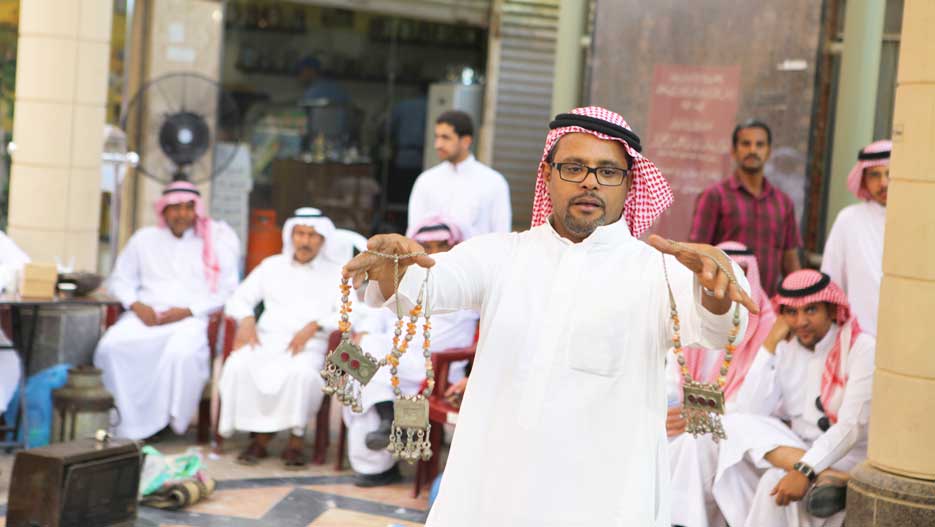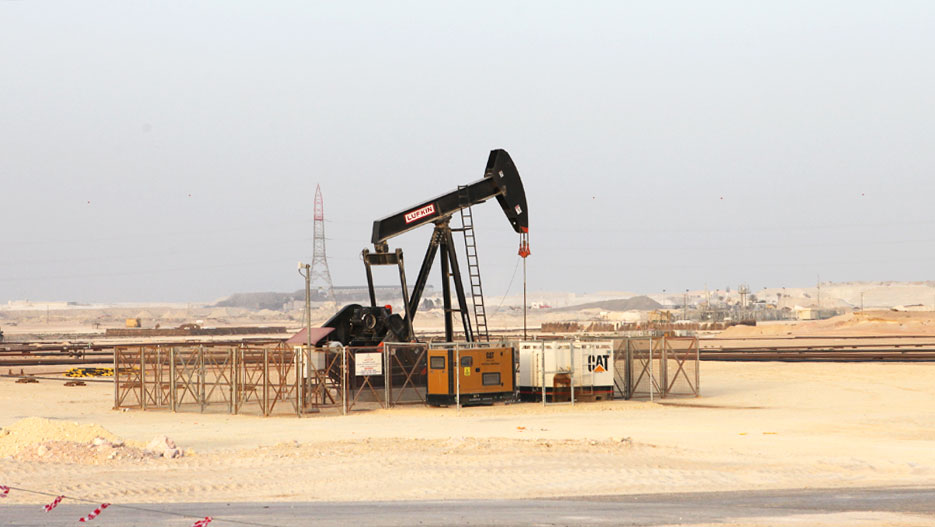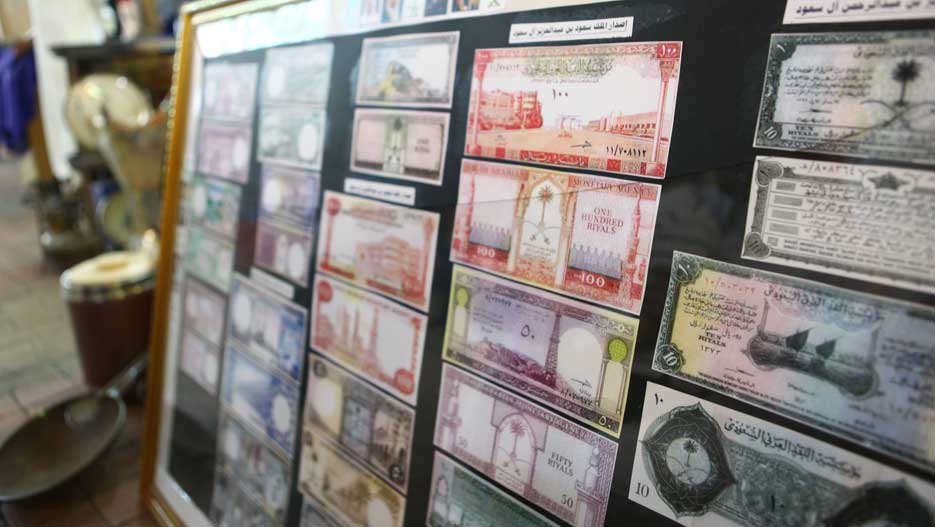Saudi Arabia: The Largest Economy in The Middle East
Saudi Arabia is the 19th world’s largest economy and the biggest economy in the MENA region. The country is the world’s largest exporter of oil, with an estimated 8,865,000 barrels of oil per day production. The petroleum sector accounts for roughly 92.5% of budget revenues, 55% of GDP, and 90% of export earnings.

When the new King Salman bin Abdulaziz al-Saud became Saudi Arabia’s king last month, he announced the handouts, worth an estimated $32bn. This practice is normal and, are a political necessity in his nation, where the royal family provides services and benefits in return for loyalty.
Saudi Arabia is the 19th world’s largest economy and the biggest economy in the MENA region. The country is the world’s largest exporter of oil, with an estimated 8,865,000 barrels of oil per day production. The petroleum sector accounts for roughly 92.5% of budget revenues, 55% of GDP, and 90% of export earnings.
The International Monetary Fund (IMF) expects Saudi Arabia to achieve a growth rate above 4 percent in 2014 and 2015, led by government spending and robust private sector activity.
Mixed Outlook
However, recently, the Standard & Poor’s lowered its outlook on Saudi Arabia to “negative” from “stable” as a result of the steep decline in oil prices. The oil-rich country’s fiscal position could weaken as a result of its dependence on oil, the ratings agency said.

“In my opinion, the fundamentals of Saudi economy are extremely strong. Whether we consider revenue, reserves, or debt ratio—all these variables are extremely encouraging,” says Dr. Ghassan Al-Shibl, President and CEO of Advanced Electronics Company (AEC) – one of the country’s leading technology companies.
Al-Shibl continues,
“Second, apart from those figures, we have to take into account the steps that have been taken by the government to enhance the economy. On the legal side, there has been a total revamping to give comfort to those doing business in Saudi Arabia. On the financial side, when we look at the financial institutions in Saudi Arabia, they are governed by strict rules and regulations, which are actually considered to be among the best in the world. Third, the best evidence of the prosperity of the Saudi economy is the country’s performance during the global financial crisis. The Kingdom’s financial institutions were spared most of the problems linked to the recession.”
Government Contracts fueling the Growth
2014-2015 looks positive with the massive domestic investments by the public sector that trickles down to the private sector. According to the kingdom’s largest bank – National Commercial Bank — The value of awarded government contracts in Saudi Arabia climbed to an all-time high of nearly USD 78 billion in 2013, and almost two thirds were awarded in the second half.
The value of awarded government contracts in Saudi Arabia climbed to an all-time high of nearly USD 78 billion in 2013, and almost two thirds were awarded in the second half.
The government is expected to use the money in the education, health, municipality, transportation, construction and water sectors, with an anticipated 539 new schools on the agenda, along with 19 new hospitals and 3,700km of new roads.
However, the IMF warns that fiscal surplus will decline on the backdrop of massive government spending. It is, therefore, important to slow the growth of government spending.

Nonetheless, Saudi has successively saved funds for the rainy days and accumulated massive foreign holdings. SAMA is the Saudi Monetary Authority (Central Bank) that manages Saudi Arabia’s foreign assets through different investment vehicles and funds, which is the 4th largest in the world. It is estimated to have $730bn in reserves, equivalent of three years of imports. The Saudi economy is well insulated from any major exogenous shock resulting from the sudden drop in the oil prices or another global recession.
It is estimated to have $730bn in reserves, equivalent of three years of imports. The Saudi economy is well insulated from any major exogenous shock resulting from the sudden drop in the oil prices or another global recession.
Saudi Arabia on the Verge of Another Fiscal Crisis in the Next 10 years?
Dt. Steffen Hertog, during the event titled “Saudi Arabia and the Gulf: A House Built on Sand?” argues that the long term fiscal sustainability in the kingdom is tentative. He argues that based on Saudi’s recent economic policies implemented as a result of the Arab Spring, such as increasing public employment.
Capital spending – the expenditure that is to diversify the economy and position it on the long term trajectory of growth, is going to be squeezed as the public salary spending and patronage spending explodes. He says, “We assume that the current spending, which is largely spending on salaries and has been always privileged over capital spending, has been the case systematically in Saudi fiscal history and all other GCC countries.” He further argues that if the oil prices stay elevated USD 130 Saudi Arabia will continue to do well in the next decade, however, if the price for oil drops below USD 50 Saudi Arabia would encounter the fiscal crisis in the next 10 years.
He further argues that if the oil prices stay elevated USD 130 Saudi Arabia will continue to do well in the next decade, however, if the price for oil drops below USD 50 Saudi Arabia would encounter the fiscal crisis in the next 10 years.
According to the country’s master economic and industrial development plan through the year 2025, the total Saudi labor force in 2009 consisted of 4,885,960 workers. That figure is projected to grow to 11,850,180 by the end of the planning period. The Saudi workers represented less than half the total work force in 2009, but they are projected to constitute almost 80 percent of the workforce by the end of 2024 as the need for imported labor declines. Female participation in the labor force is projected to rise from 14.16 percent in 2009 to 30 percent in 2024.

Boutros Klink, CEO of Standard Chartered, disagrees with fiscal sustainability issues. He says: “in my opinion, the economy in Saudi Arabia is quite robust. Many initiatives have taken place and are ongoing to diversify away from the oil sector and to build up the non-oil component of the economy. Massive investment in infrastructure is underway. Many efforts exist to develop downstream industries. There is a lot of interest in developing the SME space in order to tackle the issue of youth unemployment, which is a big challenge. I think that we will see a lot of progress in that direction over the coming few years.”
“The massive investment spending in infrastructure and the size and scope of the projects are attracting the attention of numerous multinational companies. Growth in the economy will continue to be solid over the coming few years. Given that the Saudi economy remains heavily dependent on the oil sector, there are challenges depending on how the shale story plays out. However, for the time being, the demand for Saudi Arabian oil remains solid.
However, for the time being, the demand for Saudi Arabian oil remains solid.
One thing that is important to note, there is an increase in energy demand domestically, fueled by the growth in the Kingdom’s population, which is growing at a relatively fast rate in comparison to other developed countries. There are many initiatives taking place to address the increasing domestic power needs and to develop the alternative energy